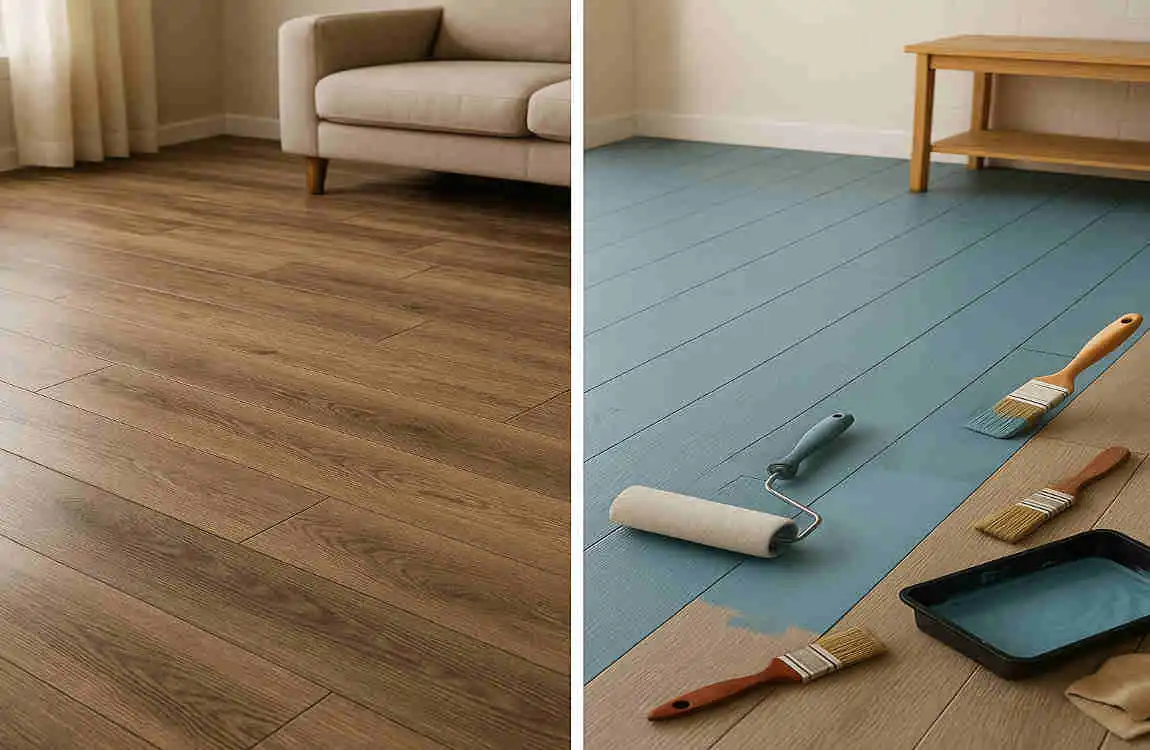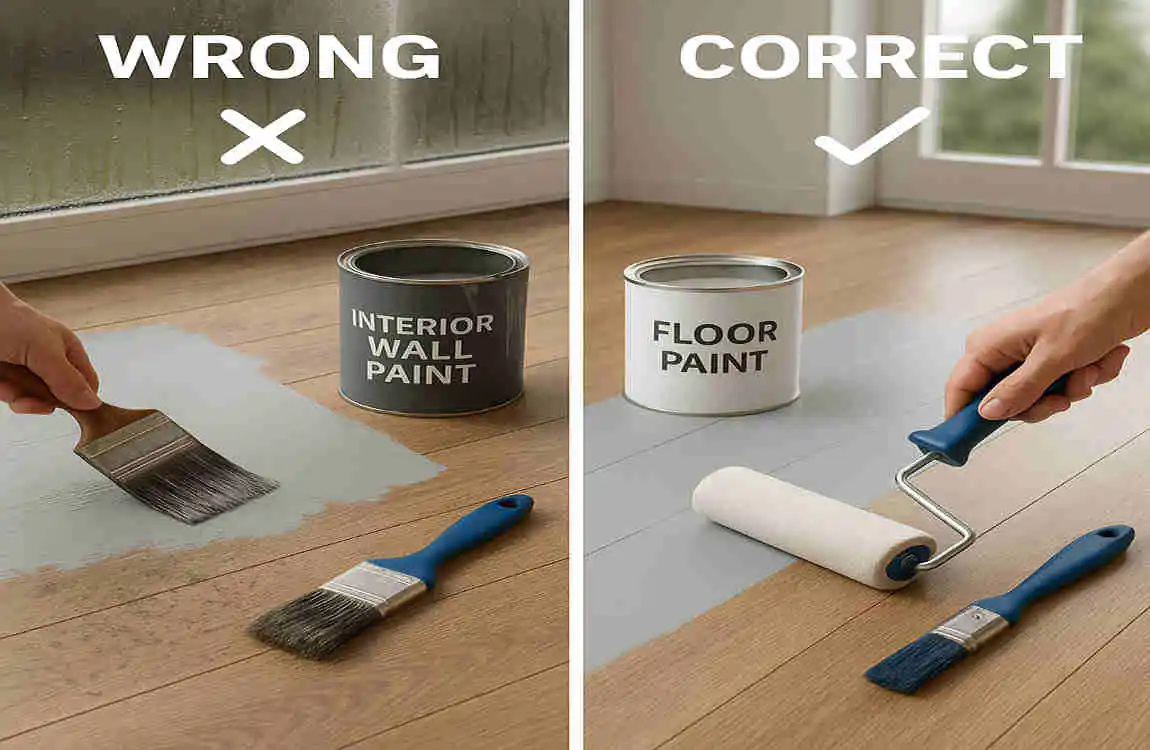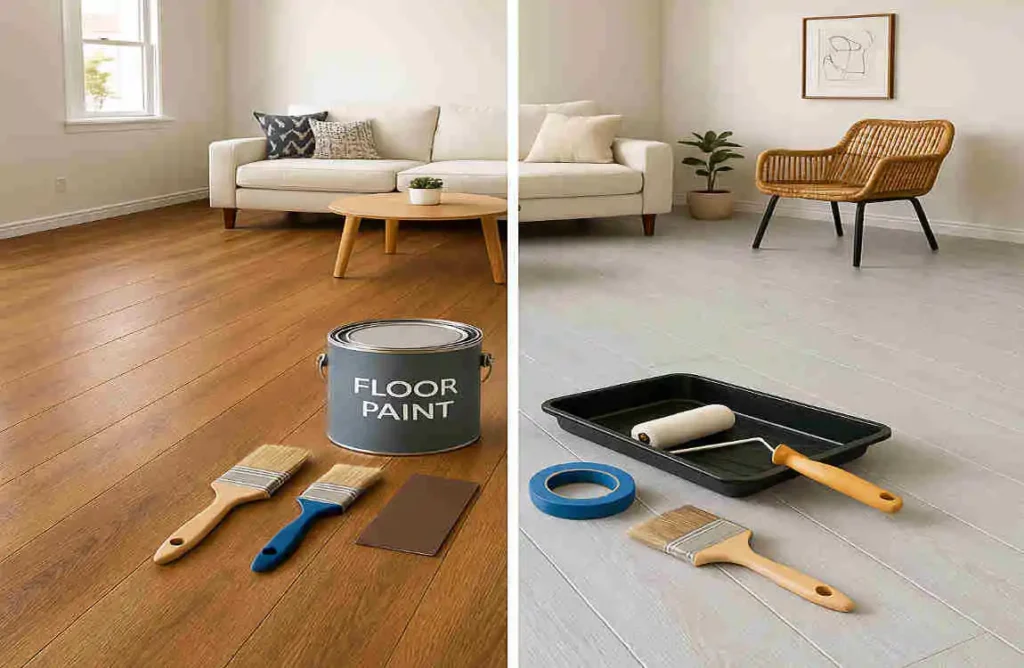Have you ever looked at your floors and thought, “I wish I could give these a fresh new look without replacing them entirely”? Flooring dilemmas are common among homeowners, especially when dealing with durable yet dated surfaces. Vinyl plank flooring, a popular choice for its affordability and versatility, is no exception.
What Is Vinyl Plank Flooring?

Before we get into painting, let’s take a closer look at vinyl plank flooring and why it’s such a popular choice for homes.
Definition and Key Characteristics
Vinyl plank flooring is a synthetic flooring product designed to mimic the look of natural materials like wood or stone. It comes in planks, is easy to Install, and is often water-resistant or waterproof.
One of its defining features is its layered construction, which typically includes:
- A wear layer: Protects the surface from scratches and stains.
- A decorative layer: Printed with realistic patterns and textures.
- A core layer: Provides stability and durability.
- A backing layer: Adds extra support and helps with installation.
Why Vinyl Plank Flooring Is Popular
There are several reasons why homeowners love vinyl plank flooring:
- Durability: It’s scratch- and water-resistant, built to last.
- Cost-Effectiveness: Compared to hardwood or stone, vinyl is budget-friendly.
- Design Options: Available in a wide range of colors, textures, and patterns.
Surface Material and Painting
Understanding vinyl’s surface is crucial when considering paint. The top wear layer is designed to repel stains and moisture, which also means it can resist paint adhesion. This is why proper preparation is vital, as we’ll discuss later.
Can You Paint Vinyl Plank Flooring?
Now, let’s address the big question: Can you paint vinyl plank flooring?
The Direct Answer
Yes, you can paint vinyl plank flooring, but it’s not as straightforward as painting walls or wooden furniture. Vinyl’s smooth, durable surface can make it difficult for paint to adhere without adequate preparation.
Factors That Influence Paint Adhesion
Several factors can affect whether paint will adhere properly to vinyl plank flooring, such as:
- Condition of the Floor: Scratches or imperfections can help paint stick better, while glossy surfaces may repel it.
- Type of Paint: Not all paints are designed for vinyl or high-traffic surfaces.
- Preparation: Sanding, cleaning, and priming are essential for success.
Pros and Cons of Painting Vinyl Plank Flooring
Pros:
- Cost-Effective: Cheaper than replacing the flooring.
- Customizable: You can choose any color or design.
- Eco-Friendly: Reduces waste by reusing existing materials.
Cons:
- Time-Consuming: Requires thorough preparation and multiple steps.
- Durability Concerns: Painted vinyl may not last as long as the original surface.
- Risk of Peeling: Without proper techniques, the paint could chip or peel over time.
When Painting Might Be a Good Idea
Painting vinyl plank flooring is worth considering if:
- You want a temporary refresh while saving for new flooring.
- The existing floor is in decent condition but needs a design upgrade.
- You’re comfortable with DIY projects and maintenance.
Types of Paint Suitable for Vinyl Plank Flooring
Choosing the right paint is crucial for a long-lasting finish. Here’s what you need to know:
Recommended Types of Paint
- Epoxy Paint: Highly durable and resistant to wear and tear, making it ideal for high-traffic areas.
- Latex Paint: Water-based and easy to work with, but less durable than epoxy.
- Acrylic Paint: Offers vibrant colors and a smooth finish, but may require a protective sealant.
Paints to Avoid
- Oil-Based Paints: They don’t adhere well to vinyl and may crack over time.
- Cheap or General-Purpose Paints: These won’t withstand the demands of flooring.
Importance of Primer and Sealants
Using a primer ensures better paint adhesion, while a sealant protects the painted surface from scratches, stains, and moisture.
Preparing Vinyl Plank Flooring for Painting
Preparation is the most critical step for a successful project. Skipping this can lead to peeling paint and wasted effort.
Clean and Degrease
Start by thoroughly cleaning the floor to remove dirt, grease, and grime. Use a mixture of warm water and mild detergent or a vinyl-safe cleaner.
Repair Scratches and Damages
Fill any scratches, dents, or gaps with a vinyl floor repair kit. Smooth out the surface for an even finish.
Sand and Scuff
Lightly sand the flooring with 220-grit sandpaper to create a rough surface for the paint to grip. Wipe away dust with a damp cloth.
Ensure Proper Ventilation
Painting indoors requires good ventilation to avoid inhaling fumes. Open windows, use fans, and wear a mask for safety.
Step-by-Step Guide to Painting Vinyl Plank Flooring
Here’s a detailed process to ensure your project is a success:
Materials and Tools Needed
- Epoxy or acrylic paint
- Primer and sealant
- 220-grit sandpaper
- Paint rollers and brushes
- Painter’s tape
- Drop cloths
Instructions
- Prepare the Area: Remove furniture, cover edges with painter’s tape, and lay down drop cloths.
- Prime the Surface: Apply a thin, even layer of primer and allow it to dry completely.
- Apply Paint: Use a roller for large areas and a brush for edges. Apply two to three thin coats, allowing each to dry before adding the next.
- Seal the Paint: Once the paint is dry, apply a clear sealant to protect the surface.
Common Mistakes to Avoid

- Skipping Sanding: A smooth surface won’t hold paint well.
- Applying Thick Coats: This can lead to uneven drying and peeling.
- Rushing the Curing Process: Allow adequate time for drying.
Maintenance Tips for Painted Vinyl Plank Floors
- Use Rugs or mats to protect high-traffic areas.
- Clean Gently: Avoid harsh chemicals or scrubbing.
- Touch Up as Needed: Keep leftover paint on hand for quick fixes.
Alternatives to Painting Vinyl Plank Flooring
If painting sounds daunting, consider these options:
Alternative Pros Cons
Peel-and-Stick Decals: Easy to apply and remove. Limited durability
Professional Refinishing: Long-lasting and professional look. More expensive
Overlays are Quick and versatile , adding height to the floor.
